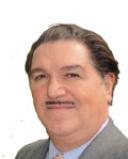Even the most strident critics of the National Rifle Association are impressed by the NRA's ability to derail any clear changes in federal gun policy. The mass murder of 17 children in Parkside Florida on February 14 is reportedly the 17th school shooting already this new year. The number of victims is similar to that of Sandy Hook and Columbine.
Each time, critics call for gun control. But the calls eventually subside, with no legislative change—not even for bump stocks or assault weapons.
But has the NRA met its match in 2018 at the hands of determined Parkland Florida teens who quickly announced a national "March for Our Lives" event on March 24?
Homocide Activism
The potential (in fact likely) success of this unprecedented action by these teens involves what is termed "homicide activism." In behavioral research at Fordham University, we have studied this little-known but surprisingly powerful phenomenon.
In the U.S. today, there are over 15,000 reported homicides per year. Some are more horrific than others, but all these homicides have a devastating impact on the "homicide survivors"—the families and friends whose loved one was taken by an uncaring killer. The resulting trauma includes rage, depression, hopelessness, feelings of injustice, and incredible stresses that could destroy even the tightest family.
Our research has measured how a small percentage of these survivors become "homicide activists." They manage to find ways to convert their negative anguish and rage into fuel to push for positive social change. In the name of their lost loved one, these ordinary citizens become fierce, unstoppable warriors for social change.
Here are just a few of dozens of examples of past homicide activists:
In 1980, when 13-year-old Cari Lightner was killed by a drunk driver, her mom Candi Lightner was enraged to learn that courts were sympathetic to such drivers. This homemaker quickly formed Mothers Against Drunk Driving (MADD), and massive social change followed, as courts across the nation found themselves forced to recognize drunk driving as a serious and preventable offense requiring severe punishment.
In 1981, the Walsh family was devastated when the body of their missing 6-year-old son, Adam, was found in a creek. Though John Walsh could not punish the unknown murderer, his love for Adam led him to spearhead America's Most Wanted (AMW) which, over the years, has led other Americans to bring more than 1,000 fugitives to justice.
And in 1988, Pan Am Flight 103 was destroyed by a terrorist bomb, and 35 Syracuse University students returning home from a Christmas holiday were among the crash’s 270 victims. Governments were uncertain about identifying and punishing the unknown culprits, until the students' determined parents organized as a group. They confronted government officials as an unstoppable force, finally forcing Libya's dictator to surrender the culprit for trial and punishment in a UK prison.
Then there are the now-familiar Amber Alerts (for Amber Hageman), and Megan's Law (for Megan Kanka).
Just Teens
Within a week of the Parkside shooting, a team of classmates stepped forward to announce a national "March for Our Lives" this March 24. One of them, Cameron Kasky, noted "this is not about the red and the blue," but about children demanding protection from adults and asking Congress to replace its inaction with action. The team already has its own website, marchforourlives.com.
How will seasoned legislators and lobbyists stand their ground—this time not against other lobbyists, but against a national army of determined children acting in the memory of their murdered classmates?
If the past is prologue with homicide activists, the odds favor the children.
References
Research on the history of "homicide activism" co-authored by Harold Takooshian and Melissa Leeolou, a former American Ballet Theatre dancer, as well as a researcher and honors graduate of Fordham.


